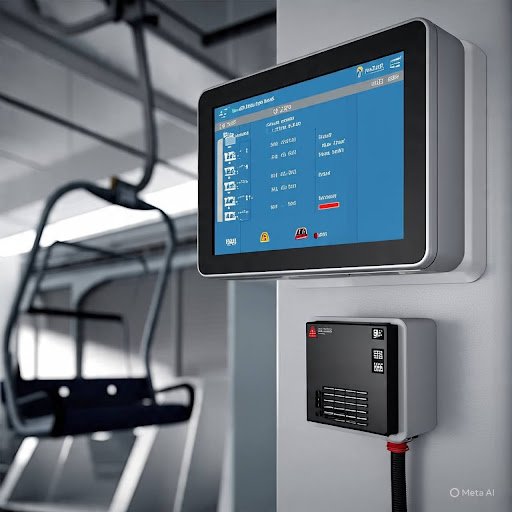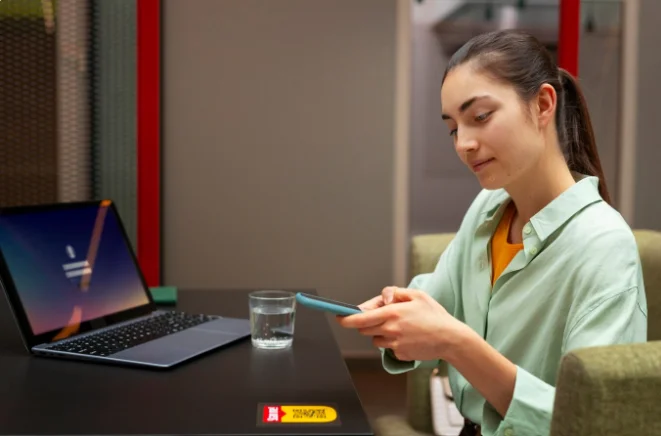Modern automation systems in the transport and recreational industries demand efficient, safe, and user-friendly solutions. One such area where automation has significantly improved functionality is in chair lift systems. These are widely used in ski resorts, mountainous regions, and even in large industrial setups for moving people or goods between elevations. Integrating Human-Machine Interface (HMI) with Programmable Logic Controllers (PLC) enhances chair lift monitoring by ensuring reliability, improving safety, and offering real-time control and diagnostics.
This article explores the integration of HMI with PLC systems for chair lift monitoring, focusing on the use of Schneider Electric’s 140CPU31110 and 140CPU65150 modules.
Understanding Chair Lift Systems
Chair lifts are cable-based systems designed to carry passengers up and down steep gradients. Their design requires precise control over various components including motors, pulleys, tension systems, and safety locks. Given the complex and hazardous environment in which chair lifts operate, automation and real-time monitoring become critical.
Why Automation Is Vital for Chair Lifts
- Safety: Real-time alerts for load, cable tension, speed, and faults.
- Efficiency: Reduces manual intervention and allows smooth operation.
- Data Logging: Keeps track of performance, usage, and maintenance history.
Role of PLC in Chair Lift Monitoring
Programmable Logic Controllers (PLCs) serve as the brain of automated systems. In chair lifts, PLCs handle a variety of tasks such as motor control, safety logic, sensor integration, and emergency response.
Key Functions Performed by PLCs
- Motor Control: Ensures smooth start/stop of the chair lift.
- Safety Monitoring: Interprets data from sensors for emergency braking or overload.
- Communication: Interfaces with HMIs and other PLCs for remote access.
Two reliable CPUs from Schneider Electric often used in such applications include:
- 140CPU31110: A compact and cost-effective option ideal for basic control applications.
- 140CPU65150: A high-performance processor capable of handling complex logic and large I/O systems, making it suitable for advanced chair lift automation.
HMI: The Operator’s Window into the System
Human-Machine Interface (HMI) allows operators to visualize and interact with the PLC-controlled system. The interface provides real-time data, control options, and diagnostics—all essential for chair lift systems that demand operational transparency.
Features of HMI Systems in Chair Lifts
- Graphical Displays: Show chair movement, motor status, cable speed, and position.
- Alarm Systems: Instant alerts for issues such as cable slippage or overload.
- Maintenance Tools: Scheduled service prompts and diagnostic checks.
- User Access Control: Different access levels for operators, maintenance, and admin users.
Integrating HMI with PLC for Chair Lift Monitoring
The integration process involves configuring the HMI to communicate with the PLC through protocols like Modbus, Ethernet/IP, or Profinet. The HMI fetches data from the PLC and displays it to the operator. Commands from the HMI are also sent back to the PLC to execute specific actions.
Step-by-Step Integration Workflow
1. PLC Programming
Using ladder logic or structured text, the PLC (such as 140CPU31110 or 140CPU65150) is programmed to control motors, monitor sensors, and respond to user inputs.
2. HMI Configuration
The HMI is configured using vendor software (like Schneider’s Vijeo Designer) to create a user-friendly interface showing chair lift status, alarms, and performance metrics.
3. Communication Setup
Both the PLC and HMI are networked, typically via Ethernet. Communication parameters such as IP address, port, and data tags are defined.
4. Testing & Simulation
Before deployment, the system undergoes thorough testing in a simulated environment to ensure that all components interact correctly.
Case Benefits of Using 140CPU31110 and 140CPU65150
140CPU31110 Advantages:
- Compact design ideal for smaller chair lift setups.
- Cost-effective for projects with limited I/O.
- Easy integration with basic HMI systems.
140CPU65150 Advantages:
- Advanced processing capabilities for high-demand systems.
- Supports redundant power supply and hot-swapping modules.
- Scalable architecture for future expansion.
By using these CPUs, engineers can choose a PLC that fits both the complexity and budget of the project.
Real-Time Monitoring and Remote Access
One of the main benefits of integrating HMI and PLC in chair lift systems is the ability to monitor and control the lift remotely. In scenarios where weather changes rapidly or terrain poses challenges, operators can access the system via a secure VPN and make adjustments from control rooms or mobile devices.
Key Remote Features:
- Live video feed integration
- Remote diagnostics and fault reset
- Predictive maintenance alerts
Enhancing Safety Through Integration
The combination of HMI and PLC significantly boosts the safety of chair lifts by providing real-time alerts, automated emergency stops, and system health checks.
Example Safety Features:
- Speed Alerts: Notify if the motor speed exceeds limits.
- Emergency Stop: Triggered via HMI or detected fault.
- Cable Tension Monitoring: Ensures load is evenly distributed.
Future Developments in HMI-PLC Integration
With advancements in Industrial Internet of Things (IIoT), chair lift systems will become even more intelligent. Integration with cloud services, AI-driven diagnostics, and mobile applications will redefine how we interact with automated transport systems.
Conclusion
Integrating HMI with PLCs like 140CPU31110 and 140CPU65150 offers an efficient and intelligent solution for chair lift monitoring. From improving safety to enhancing usability and remote access, this integration sets a new standard in transport automation. Whether you’re upgrading an existing system or designing a new installation, leveraging this technology ensures reliable operation and peace of mind in every elevation journey.
FAQs
Q1: Can both 140CPU31110 and 140CPU65150 be used for chair lifts?
Yes, but 140CPU31110 is better for smaller systems, while 140CPU65150 is suitable for larger, more complex installations.
Q2: Is HMI necessary for PLC-based chair lift systems?
Yes, HMI provides real-time control and visibility, essential for safe and efficient operation.
Q3: What communication protocols are typically used?
Modbus TCP, Ethernet/IP, and Profinet are commonly used for PLC-HMI communication.









